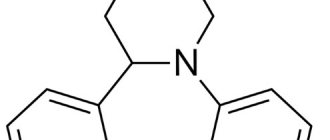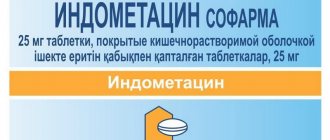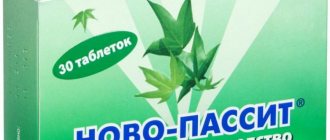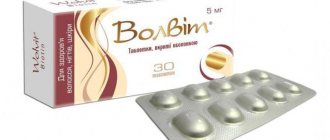Anestezin tablets are one of the very first synthetic drugs that were used as local anesthesia. The drug was first synthesized back in 1890, and already from the late 90s it began to be actively used in medical practice. Thanks to its successful 100-year history of development, the medicine is still widely used as an independent remedy and as part of various drug courses. In the article we will consider the composition and indications of the tablets, as well as their effect on the body.
Indications
According to the instructions, Anestezin tablets are prescribed by doctors to reduce pain that occurs with severe spasms and all kinds of diseases of the gastrointestinal tract (esophagitis, gastralgia, gastric and duodenal ulcers), and increased sensitivity of the esophagus. Also, the drug will be useful for anesthetizing wounds and ulcerative skin surfaces, for urticaria and other unpleasant skin diseases that are accompanied by severe itching. Only in some cases, the drug is prescribed to pregnant women, only if women experience constant vomiting.
According to reviews, "Anestezin" can be prescribed by doctors when performing all kinds of diagnostic manipulations on the mucous membranes, for example, during gastroscopy, various gynecological procedures, rectoscopy, otoscopy, urethroscopy.
General information about the drug
The active ingredient in the medication is benzocaine (anesthesin). The analgesic effect depends on the amount of the active substance in the composition of the medication. Benzocaine does not produce a resorptive effect. When the drug is applied to the oral mucosa, the action of benzocaine begins within 40-60 seconds. Also, when the drug gets into the mucous membrane of the digestive tract, it exhibits an anorexigenic effect on the body.
Drug group and INN
Anestezin is used as an analgesic medication for instrumental diagnostics, which can cause mild or moderate pain, as well as for dental procedures. Most often, the drug is used for external use, but the analgesic is effective when taken orally. INN – Anestesin (Anaestesinum).
Release form and cost
Anestezin is produced in several forms:
- Tablets with the active component of 0.3 g of benzocaine, which are packaged in blisters of 10 pieces and placed in a cardboard box.
Anesthetic ointment - the composition contains benzocaine, which quickly penetrates the tissues and reduces the painful sensitivity of the skin.
The ointment also relieves itching and reduces the development of urticaria. Using the ointment, instrumental diagnostics of the urethral canal and bladder, rectoscopy and diagnosis of gynecological pathologies are carried out. The product is often used in dental procedures to relieve pain in the oral mucosa and gums. The ointment is packaged in thick foil tubes of 28.4 g.- Anesthetic rectal suppositories are produced to relieve pain in the rectum due to hemorrhoids and fissures. Candles are packed 10 pieces per cardboard box.
- Ear drops for pain relief from otitis media. The product is packaged in opaque plastic bottles with a pipette.
- Oil solution for external use. The application technology is the same as ointments.
The average cost of a medication in Russia is presented in the table.
| Number of pieces per package | Release form of the drug Anestezin | Average price in rubles |
| 10 | pills | 163-211 |
| 1 | 10% ointment | 643-674 |
| 1 | 5% ointment | 428-431 |
| 10 | suppositories | 70-104 |
| 1 | 20% oil solution | 230-280 |
Anestezin is also used in the following drugs:
- Heparin ointment.
- Fastum gel.
- Menovazin (alcohol tincture).
- Almagel-A (a drug for the treatment of gastrointestinal pathologies).
- Bellalgin.
- Pavetesin.
- Suppositories Anestezol.
Compound
The suppositories include:
- benzocaine – 100 mg;
- bismuth – 40 mg;
- zinc – 20 mg;
- menthol – 4 mg.
The tablets contain 300 mg of benzocaine, as well as additional components:
- starch;
- glycerol;
- lactose;
- potassium dihydrogen phosphate;
- MCC;
- magnesium sulfate.
Use of the drug
Anestezin tablets are practically insoluble in water. The tablet form of the drug is taken orally at a dose of 300 mg 3-4 times a day. In some cases, a single dosage of 500 mg may be prescribed. However, it is worth remembering that the maximum daily intake should not exceed 1,500 mg. For pain relief, children under one year of age should be given no more than 20-40 mg.
For children 2-5 years old, the recommended dose should be no more than 50-100 mg. According to the standard prescription, “Anestezin” in tablets for older children (from 6 to 12 years old) is prescribed in a dosage of no more than 120-250 mg. Of course, the dosage, frequency of administration and duration of drug therapy are determined only on an individual basis by the attending physician.
Directions for use and dosage
Anestezin, according to the instructions, is taken depending on the indications as follows:
- Orally – for stomach pain and high sensitivity of the esophagus as an anesthetic, 0.3 g about 3-4 times a day. The maximum single dose of the drug for adults should not exceed 0.5 g, and the daily dose should not exceed 1.5 g. Permissible doses for children from 6 to 12 years old are 0.12-0.25 g, from 2 to 5 years old - 0.05 -0.1 g, up to 1 year – 0.02-0.04 g;
- Externally - to the affected area in the form of 5% ointment, powder or solution for external use for urticaria and skin diseases, as well as for anesthesia of ulcerative and wound surfaces. For inflammation of the hearing aid, 4-5 drops are injected into the external auditory canal, followed by the introduction of a cotton swab. The application should be repeated every few hours if necessary;
- Locally - in suppositories of 0.05-0.1 g, as well as for lubricating the mucous membranes in the form of a 5% or 20% oil solution.
Operating principle
The action of the main component of the tablets is rapid. This substance allows you to reduce the ability of membranes to absorb sodium ions, displace calcium, and also block the occurrence of nerve impulses and their further conduction. When the drug is taken orally, its absorption is negligible. As for the carcinogenicity of the active ingredient, such clinical studies have not yet been conducted. Its effects on fertility have also not been studied. If Anestezin is combined with cholinesterase inhibitors, the metabolism will be somewhat inhibited. This fact is important to consider when taking these medications simultaneously.
pharmachologic effect
According to the instructions, Anestezin is a local anesthetic for surface anesthesia. The active substance of the drug reduces the permeability of the cell membrane to Na+, and also displaces Ca2+ from the receptors that are located on the inner surface of the membranes and blocks the conduction of nerve impulses. The drug prevents the occurrence of pain in the endings of sensory nerves and their further spread along the fibers. Anestezin is a fast-acting agent - the expected effect is achieved after one minute of contact with the mucous membrane.
Side effects
In most cases, Anestezin tablets do not cause allergies. But doctors have recorded cases of contact dermatitis or itching if the patient violates the dosage, for example, uses the drug for a long period of time without a break. All negative reactions gradually disappear after stopping the medication.
Many reviews from patients who were treated with Anestezin tablets indicate that in most cases this drug is well tolerated. If you follow the dosage prescribed by your doctor, there will be no side effects. An overdose is only possible if you take the tablets in too large doses. Its symptoms manifest themselves in the following conditions:
- dizziness;
- dyspnea;
- cyanosis.
Indications and contraindications
Anestezin is prescribed orally in tablet form (orally), as well as in the form of an ointment for pathologies of the digestive tract. Main indications for prescribing the medication:
- gastralgia;
- ulcerative pathologies on the mucous membrane of the stomach and duodenum;
- esophagitis.
Anesthetic ointment is prescribed for oral use and application to the skin for the following pathologies:
- sensitivity and pain in the esophagus;
- gastritis of the stomach;
Myositis
urticaria and allergic rash;
- skin itching;
- cracks in the epidermis and mucosa;
- itching in the anus;
- myositis;
- burns of varying severity;
- sores on the skin;
- purpura;
- eczema;
- trophic ulcers of atherosclerotic and diabetic etiology;
- varicose veins;
- toothache;
- stomatitis;
- otitis media;
- abrasions and cracks on the genitals;
- vaginal fissures.
Sometimes the medication is prescribed during pregnancy to women with toxicosis to reduce the frequency of the gag reflex. Children are prescribed medication for external use (ointment, oil solution) from the age of 2, and for internal use (orally) - from the age of 12. Up to 2 years, Anestezin is prescribed only in hospital treatment. When breastfeeding a child, the medicine is also prescribed under medical supervision and in minimal doses.
The only contraindication is intolerance to benzocaine by the body, as well as sensitivity to the auxiliary components in the medicine.
Additional Information
The following drugs are considered analogues of Anestezin in tablets: Benzocaine, Anesti, Retocaine, Parathesin, Anestalgin, Egoform, Norcaine.
In addition to the tablet form, you can find “Anestezin”, which is also available in the form of an ointment for external use (5% and 10%). The ointment can be used for the following conditions:
- toothache;
- severe pain in the gums;
- with otitis, which is accompanied by itching of the skin;
- pain in the ear canal;
- inflammatory disease of skeletal muscles;
- nettle rash;
- anal skin lesions;
- diseases of superficial veins.
Release form and composition
The active ingredient of the drug is benzocaine.
1 g of the active substance is soluble in chloroform (2 ml), ether (4 ml), ethanol (5 ml), as well as in fatty oils (30-50 ml) and diluted hydrochloric acid. The worst solution is diluted in water (2500 ml).
Anestezin is available in the form:
- White crystalline powder in the form of a topical powder;
- Tablets 0.1 g, 50 pieces per package;
- Tablets 0.3 g, 6-10 pieces per package;
- Ointments for external use 5% and 10%;
- Solutions for external use;
- Suppositories (candles) for rectal administration, 0.05 g and 0.1 g.
special instructions
To date, laboratory studies have collected insufficient information about the effect of the main component on the reproductive ability of a woman, as well as on the fetus. Therefore, the use of Anestezin during pregnancy is possible only when the expected benefit to the mother outweighs the potential risk to the child. Caution must be exercised when using tablets during lactation, since it has not been determined whether benzocaine passes into breast milk.
The drug is not prescribed unless absolutely necessary for children under two years of age. The effect of the anesthetic is significantly enhanced by non-narcotic analgesics and cholinesterase inhibitors.
When Anestezin is combined with sulfonamides, antibacterial activity is reduced.
During the period of drug therapy, it is important to refrain from drinking alcohol.
Pharmaco-properties
Anestezin is used to reduce the sensitivity of the skin and mucous membranes. The active component is benzocaine, which has an analgesic effect of the drug. It helps reduce the permeability of cell membranes to sodium ions, and also removes calcium molecules from receptors that are located inside cell membranes, as a result of which the conduction of pain impulses through nerve fibers is blocked.
Characteristics of anesthesin
The drug is an analgesic with a fast-acting effect. After the medication has been applied to the oral mucosa, the analgesic effect in this location occurs within 50-60 seconds. It blocks the sensitivity of nerve endings, and therefore the appearance of pain, and also stops the process of transmitting pain along nerve fibers to the brain.
Once inside, the active component begins to act within 5-8 minutes:
- absorption occurs mainly in the digestive organs, as well as in liver cells;
- 10% is metabolized in liver cell enzymes;
- the drug is excreted through bile acids in feces;
- The half-life of the substance is from 1 to 4 hours.
Analogs
Analogues of Anestezin are drugs that contain benzocaine:
Relief Advance is an analogue of anesthetic ointment, used to relieve joint, bone and muscle pain, as well as reduce inflammation in tissues.- Almagel A is a suspension for the treatment of pathologies of the digestive organs and gastric ulcers. Used three times a day before meals.
- Lidocaine is a medication that has analgesic properties and is available in the form of an injection solution. Effectively used in dentistry, as well as externally on mucous membranes.











